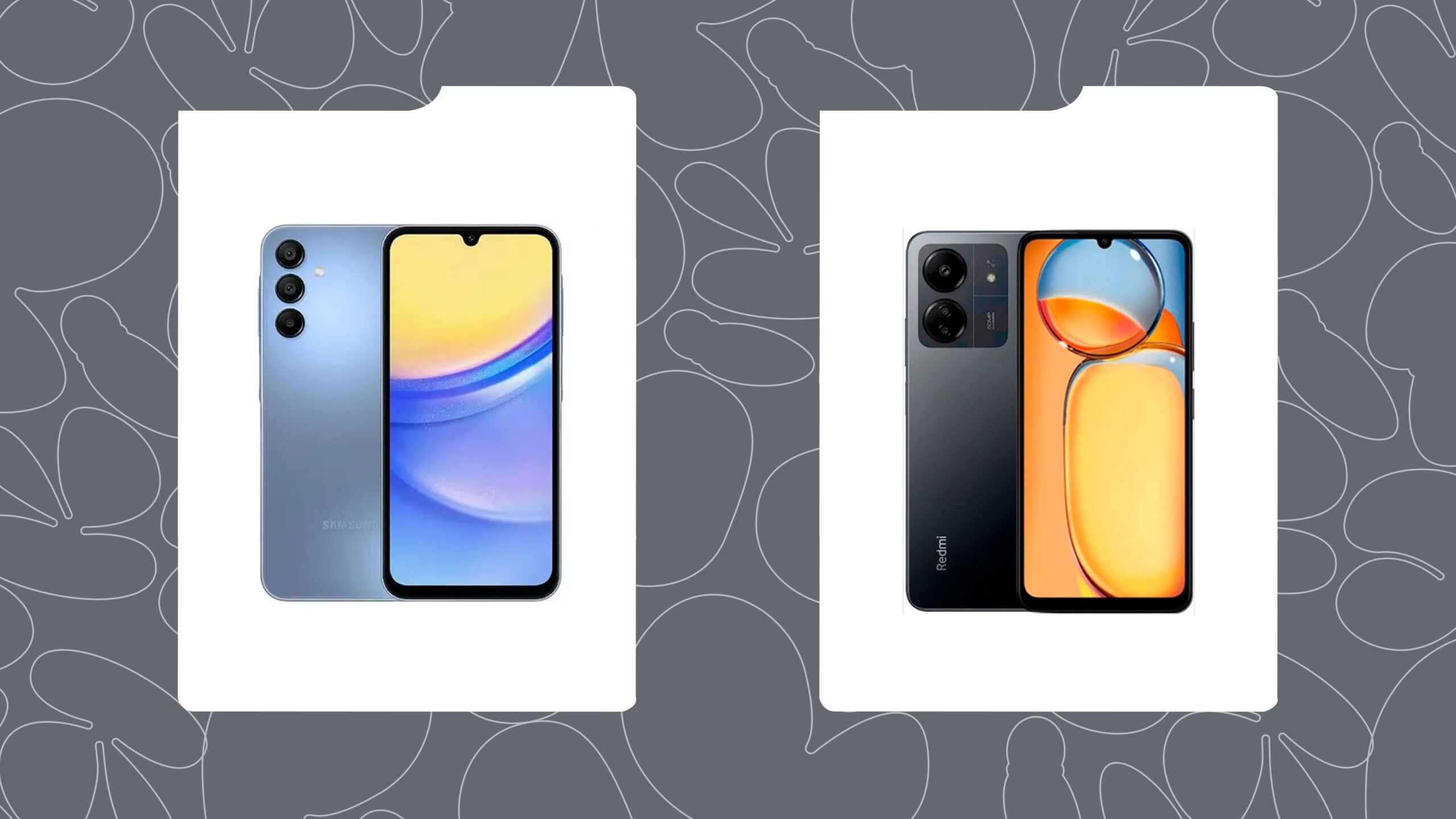
Are you looking for a phone in the ₦200k – ₦300k range that gives you the best mix of speed, camera quality, and battery life without spending so much?
The Samsung Galaxy A15 and Xiaomi Redmi 13C are part of the most talked-about contenders in Nigeria’s budget smartphone scene. Both are marketed as affordable yet capable, with enough features to make you feel like you’re getting way more than you paid for.
But beyond the glossy spec sheets, how do they compare in everyday Nigerian use, from browsing and gaming to camera, heat management, and software support? We put them side-by-side to help you figure out which one truly offers the better budget bang for your wallet.
Design & Build Quality
The Galaxy A15 leans into Samsung’s signature polish, slim at 8.4mm, sturdy in the hand at 200g, and showing off a firm 6.5-inch Super AMOLED display with FHD+ resolution that’s hard to beat in this price range. The rounded corners and minimalist front give it a modern, premium feel, even if the plastic back reminds you it’s still budget-friendly.
Redmi’s 13C, on the other hand, stretches the canvas to 6.74 inches. You get Gorilla Glass protection and TÜV Rheinland certifications for eye comfort, plus a smoother 90Hz refresh rate. The panel’s only HD+ resolution means it’s not as sharp as the A15, but it wins in size and screen fluidity if that’s your priority.
Performance & Software
Samsung powers the A15 with a MediaTek Helio G99 chip paired with 4GB of RAM, which keeps daily tasks smooth and casual gaming steady. Multitasking isn’t lightning-fast, but the One UI 6 interface, based on Android 14, makes up for it with clean visuals, smart features, and long-term update promises, a rare perk for a budget phone.
Redmi 13C sticks to the Helio G85 with similar 4GB RAM, which is slightly older tech but still handles browsing, social media, and light gaming well. It runs MIUI 14 on top of Android 13, bringing plenty of customisation options, though some users say it can feel heavy with pre-installed apps.
Read Also: 5 Places to Swap Your Phones for New Ones in Lagos
Cameras
The Galaxy A15’s triple-camera setup is led by a 50MP main shooter, backed by 5MP ultrawide and 2MP macro lenses. Daylight shots are sharp and colourful, while ultrawide gives you more creative framing. Low-light shots are decent for the price, though you’ll spot some grain.
Redmi 13C also packs a 50MP main camera but skips the ultrawide in favour of a simpler dual setup with a 2MP depth sensor. The main lens holds up well in daylight with realistic colours, but you’ll miss the extra versatility of an ultrawide, and night shots tend to need more editing.
Battery & Charging
Samsung fits the A15 with a 5,000mAh battery that comfortably lasts a full day of mixed use, even with some streaming and gaming. Charging happens via 25W fast charging, a step above many rivals in its tier.
Redmi matches the 5,000mAh capacity and pushes 18W fast charging. You’ll still get a solid day of use, but the extra charging speed on the A15 could be handy for heavy users on tight schedules.
Connectivity & Extras
Both phones cover the basics: dual SIM, 4G LTE, Bluetooth, and USB-C. The A15 offers NFC (Near Field Communication) support in certain regions, which is handy for contactless payments. Redmi 13C lacks NFC but adds a 3.5mm headphone jack, which some budget buyers still swear by.
Real-World Reviews
User feedback on the A15 is mixed. Some owners praise its smooth day-to-day use and decent camera quality for the price, but others report slowdowns over time, occasional freezing, and lag when switching between apps. The phone’s build gets called out for being fragile and overly sensitive to water, and a few users have had issues with the compass never working correctly. That said, the promise of up to four Android upgrades is a plus for those planning to keep it long term.
Konga
₦314,000 (256 GB)
₦248,900 (128 GB)
The Redmi 13C gets points for offering lots of storage in the higher configurations and being fine for basic tasks, but it struggles under heavier use. Gaming performance, especially with newer 3D titles, tends to lag, and the display brightness leaves some users wanting more outdoors. The camera is described as “okay” but not a strong selling point, and battery life can drain faster than expected, even though charging is quick. Many find it best suited as a secondary or backup phone rather than a daily driver for demanding use.
₦173,600 (256 GB)
₦150,000
Verdict
If you want better display sharpness, longer software support, NFC for payments, and faster charging, go with the Samsung Galaxy A15. If you want a bigger screen with a smoother 90Hz refresh rate and are okay with lower resolution and weaker cameras, the Redmi 13C is the cheaper fit.
Overall Best Performer: Samsung Galaxy A15 because it is more future-proof with its software updates, AMOLED screen, and all-rounder balance of speed, battery, and camera versatility.
